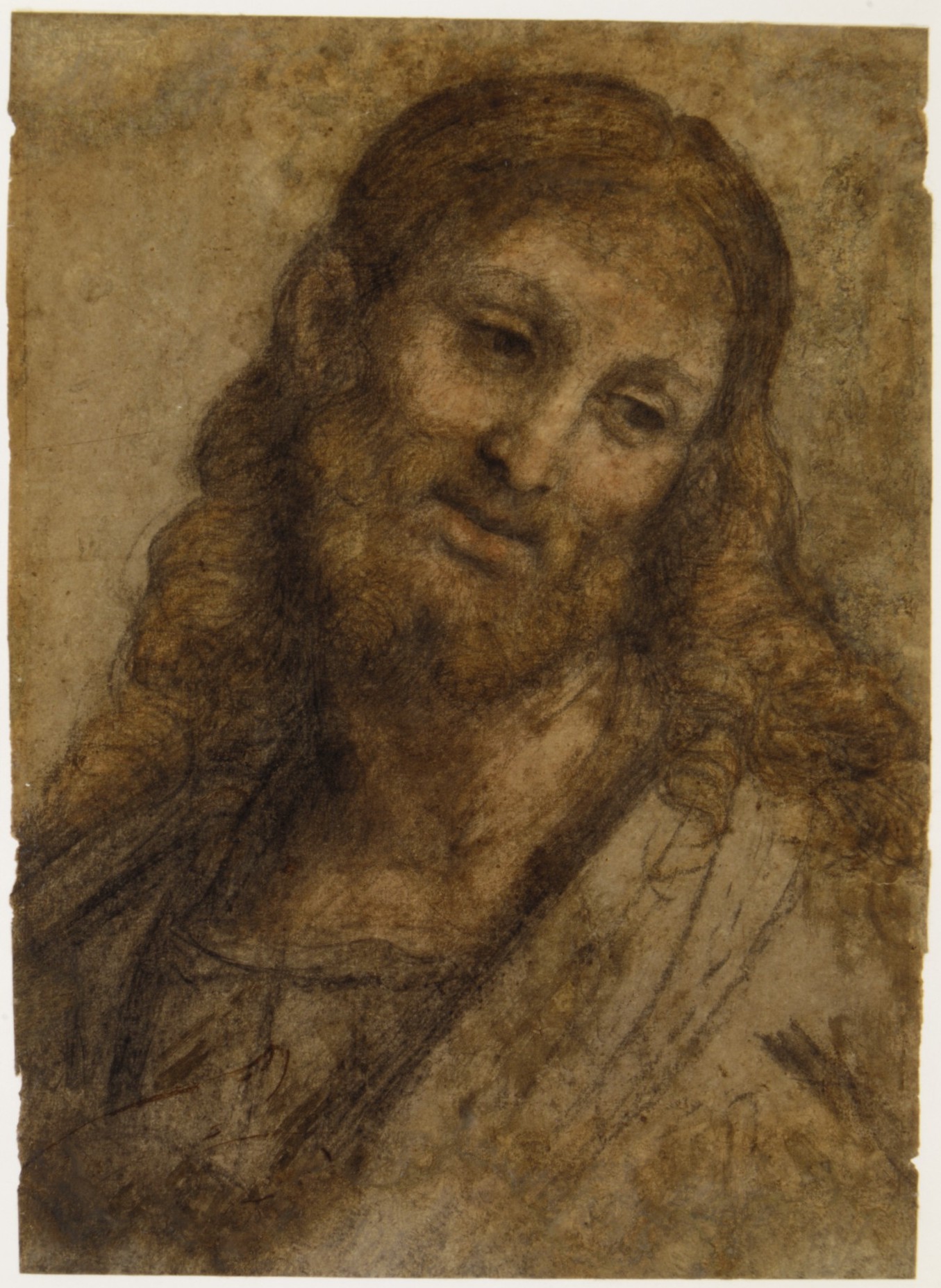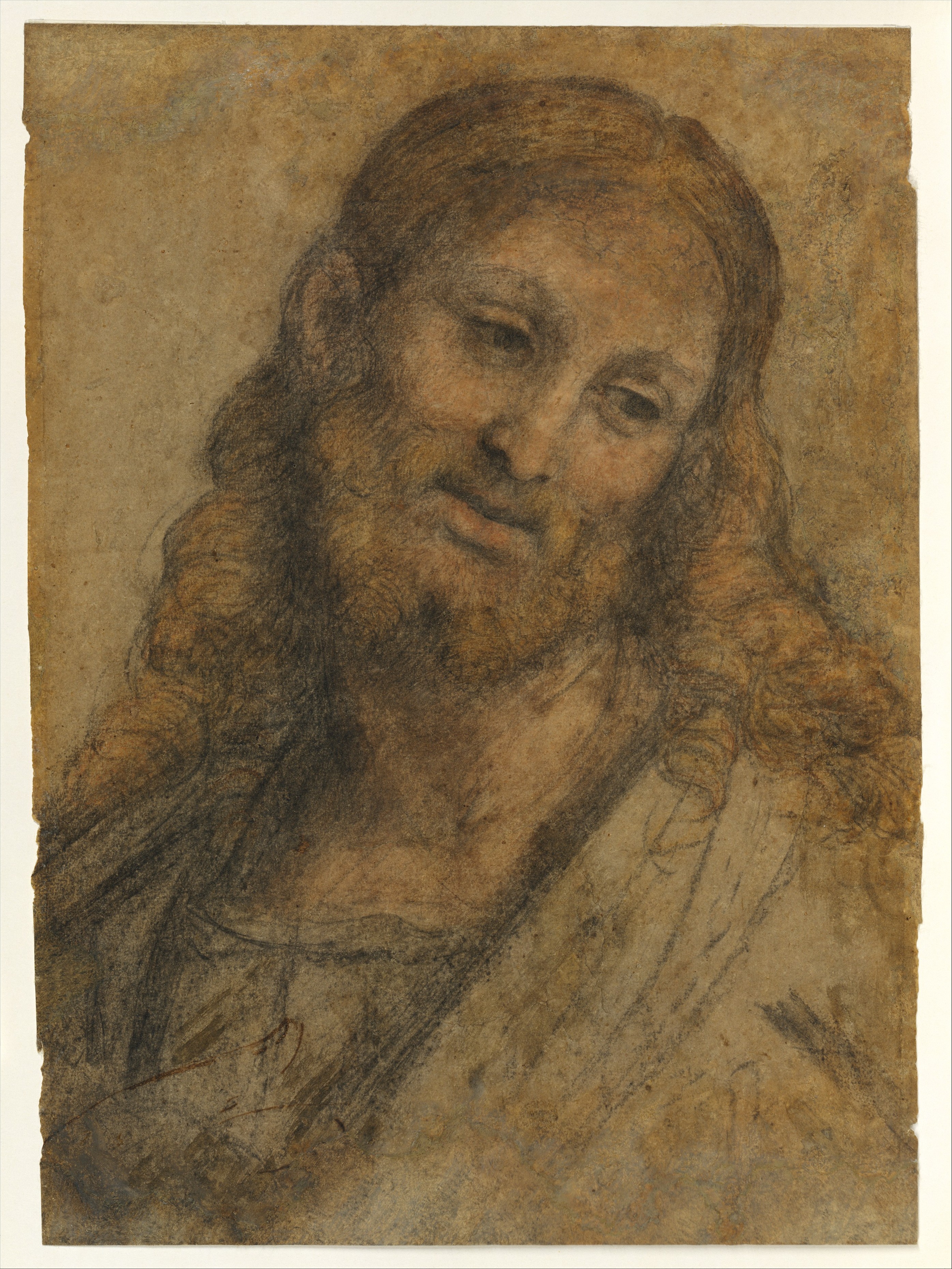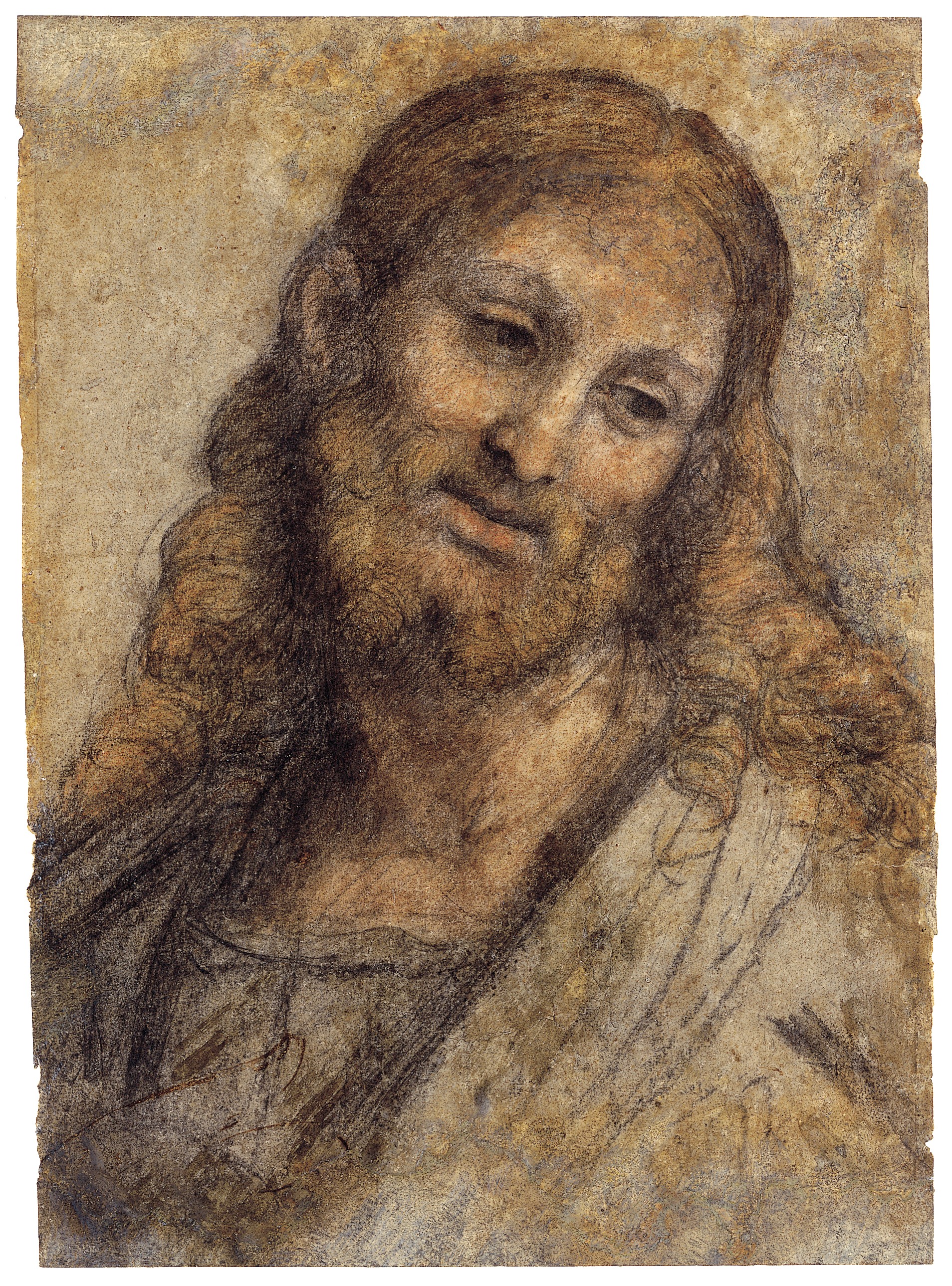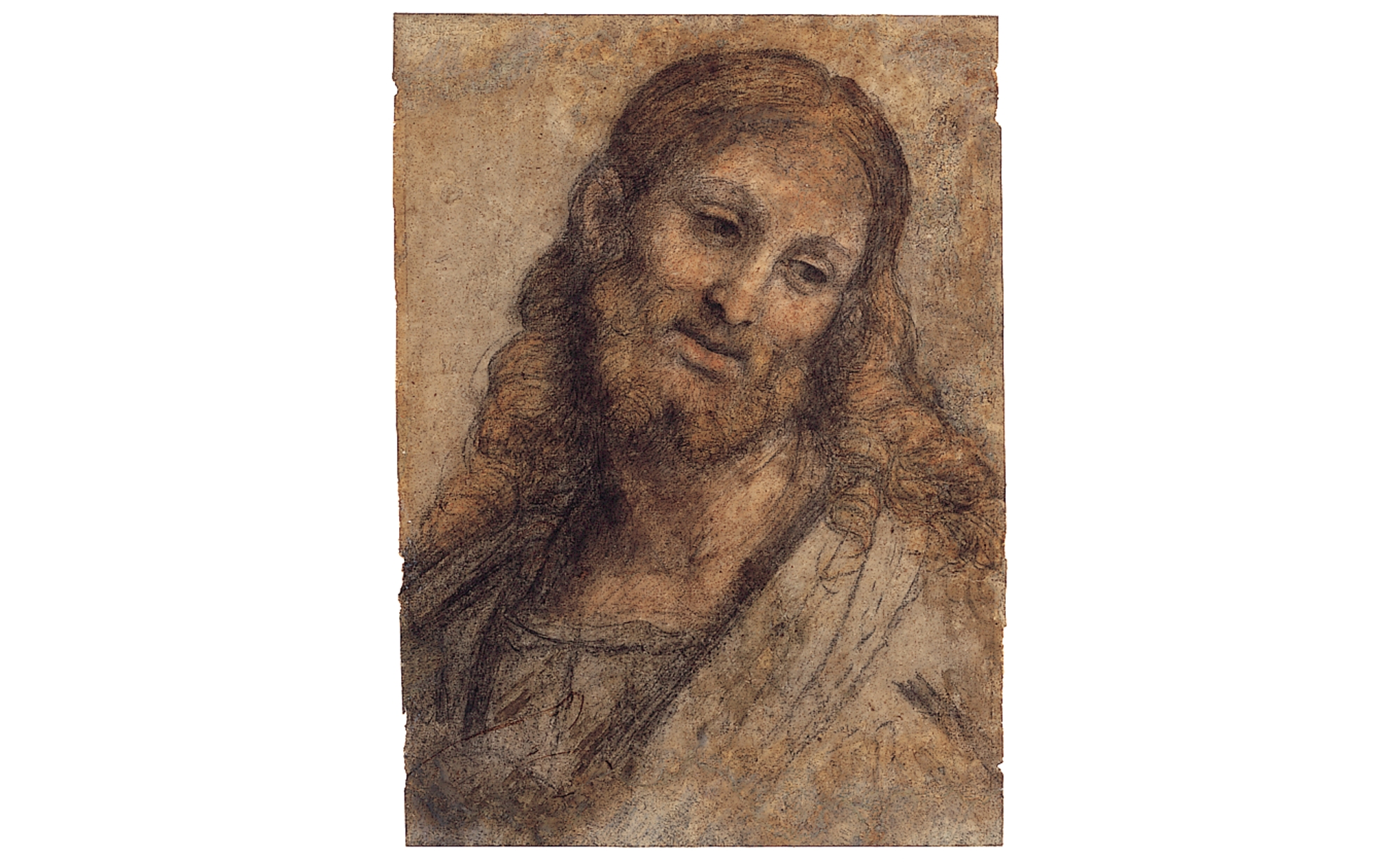Bust of a Bearded Figure
Andrea Solario Italian
Not on view
Although the correct attribution of the Metropolitan Museum drawing to Andrea Solario was first recognized by Wilhelm Suida in 1945, and was endorsed by Luisa Cogliati Arano in 1966, it was also often wrongly published as by Bernardino Luini (according to Jacob Bean in 1982), and as Gaudenzio Ferrari in 1956 (Martin Weinberger, oral communication to Claus Virch, curator, The Metropolitan Museum of Art). The Metropolitan study is very closely related to the design of the bearded apostle standing on the extreme right, who points at the empty sarcophagus, in Solario's Assumption of the Virgin (Sagrestia Nuova, Certosa of Pavia), as was first rightly noted by David Alan Brown. (See Brown 1987, pp. 287-89, nos. 74, 77.) This connection to the Pavia altarpiece was recently doubted, however, and too hastily, in the present author's opinion (see Linda Wolk-Simon in the exhibition catalogues, The Metropolitan Museum of Art and Cremona, 2003 and 2004). The Pavia altarpiece of the Assumption, the only work by Solario mentioned in Vasari's Vite (1550 and 1568 editions), was left unfinished at the time of the artist's death in August 1524; according to Lamo's account of 1584 (reprinted in 1774), it was completed by Bernardino Campi, in 1576. (See Brown 1987, pp. 287-88, no. 77.) Also related to the Pavia altarpiece are two sheets of studies in black chalk with brush and brown wash for the designs of the side wings, each of which represents a group of three apostles (Musée du Louvre 10191 and 10191 bis, Paris). (See Béguin, 1985, pp. 90-91, no. 53; Brown 1987, pp. 288-89, nos. 75, 76.)
The most recent scientific examination (Rachel Mustalish, Paper Conservation, The Metropolitan Museum of Art; November 22, 2005) has clarified some of the questions regarding the colored chalk technique of this drawing and the extent of its restoration, as well as has more definitively documented the presence of a Milanese watermark on the paper; it is identical to that in Solario's drawing of Christ Carrying the Cross (Albertina inv. 18817, Vienna; see Brown 1987, pp. 286-87, 289, nos. 73, 77). The design for the figure's right hand placed on the chest (it is very quickly sketched at the lower left of the sheet) is an addition in brush and iron gall ink, drawn on top of the dry chalk layers, and probably represents a later reworking of the figure's pose, but in all likelihood by the artist himself as it is confidently traced. The watermark on Solario's study is also closely similar to that in Giovanni Antonio Boltraffio's Portrait of a Woman (Biblioteca Pinacoteca Ambrosiana Cod. F. 290 inf. 7, Milan), an independent work though the design of this drawing reflects that of the altarpiece of St. Barbara (Gemäldegalerie Staatliche Museen, Berlin) commissioned in 1502 for S. Maria presso S. Satiro; the two drawings by Solario and Boltraffio are also executed in an extremely similar medium of colored chalks, but the sheet by Solario is greatly restored. When Solario's Bearded Man was exhibited together with the two famous portrait drawings in colored chalks by Boltraffio from the Ambrosiana (see also the Portrait of the Youth, Ambrosiana Cod. F. 290 inf. 8) in the Leonardo exhibition at The Metropolitan Museum of Art in 2003, the comparisons emphasized the great similarities of style and drawing technique shared by these three works (see Carmen C. Bambach in Metropolitan Museum of Art 2003, pp. 655-59, nos. 127-28). This raises the possibility that the dating of all three drawings may, in the end, not be dissimilar. Bearing in mind that Boltraffio died in 1516 and Solario in 1524, a date of 1515-24 for Solario's drawing, may be plausible, but this dating may be refined if the commission document for Solario's Pavia altarpiece is discovered.
The innovative use of colored chalks may suggest that the Metropolitan drawing, although utilized as a prototype for the apostle at left in the Pavia altarpiece, may have then also been a reworked for an independent function: the fact that the reworking of the hand on the lower left is in brush with iron gall ink, rather than in chalk, would strongly argue for the reuse of the design of the figure in a different context. An analogous case is probably represented by the pastel portrait by Boltraffio in the Ambrosiana (see above), which is based on the figure in the Saint Barbara altarpiece of 1502, now in Berlin. The use of the colored chalk technique here is intimately connected to Leonardo's practice and that of his closest pupils, and it would be numerous decades later that other artists would begin using this medium widely. (See McGrath, 1994; Thomas McGrath, "Colour in Italian Renaissance Drawings: Reconciling Theory and Practice in Central Italy and Venice," Apollo, vol. 146, no. 429 (November 1997), pp. 22-30; Thomas Mc Grath, "Federico Barocci and the History of Pastelli in Central Italy," Apollo, vol. 148, no. 441 (November 1998), pp. 3-9.)
(Carmen C. Bambach; March 24, 2006)
Due to rights restrictions, this image cannot be enlarged, viewed at full screen, or downloaded.
This artwork is meant to be viewed from right to left. Scroll left to view more.









